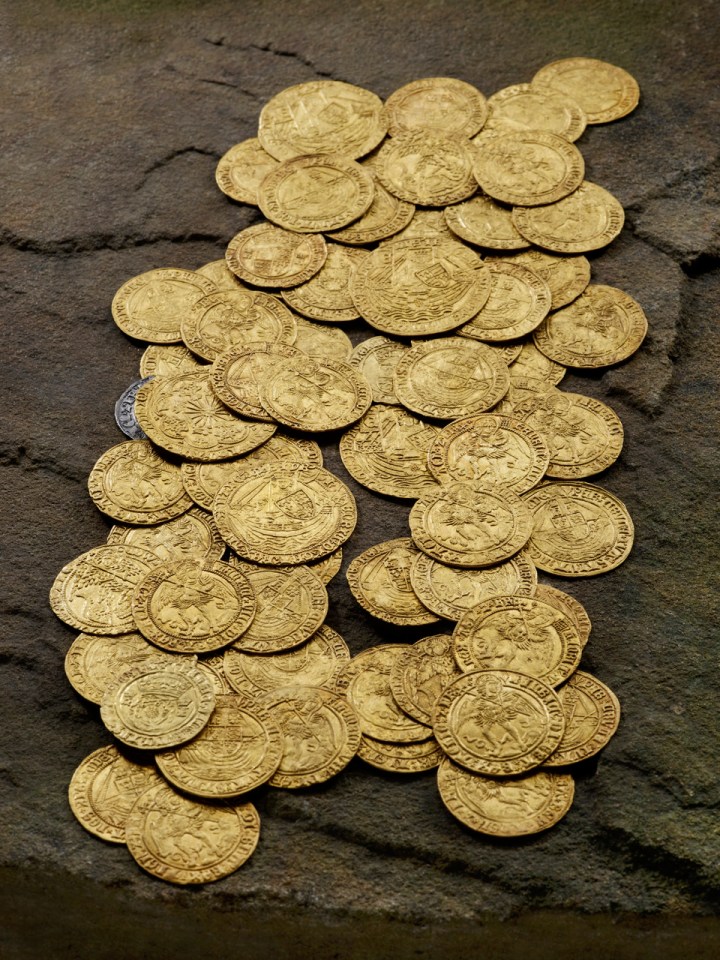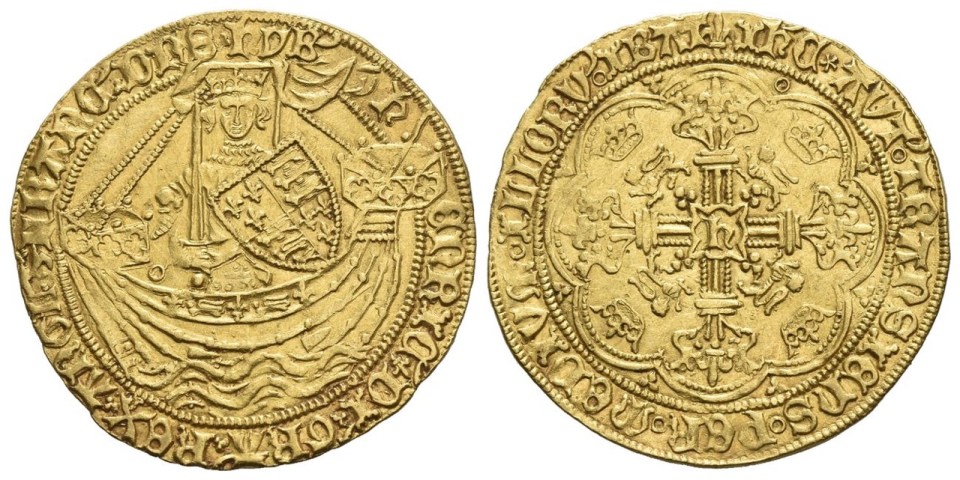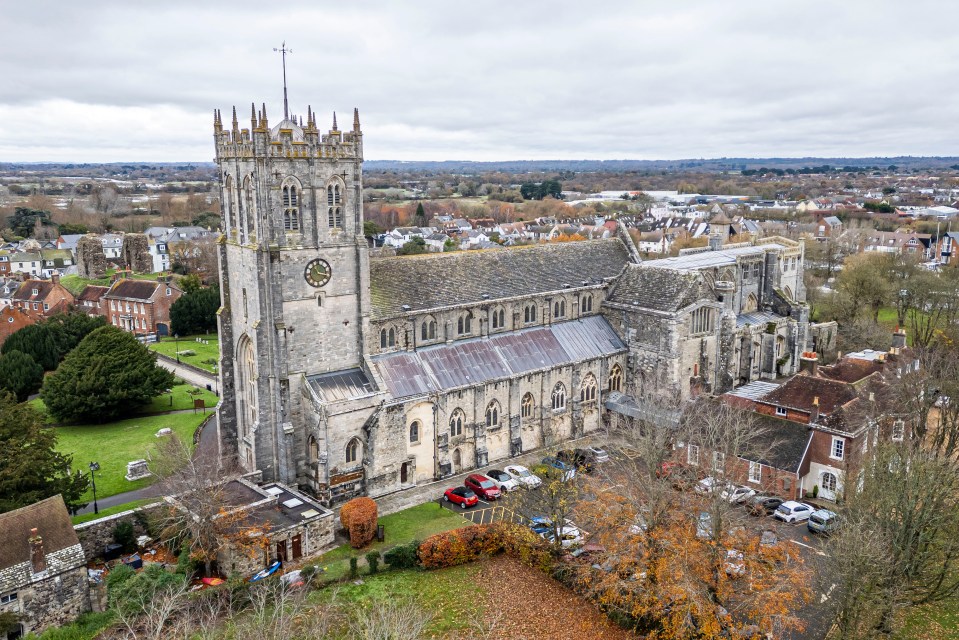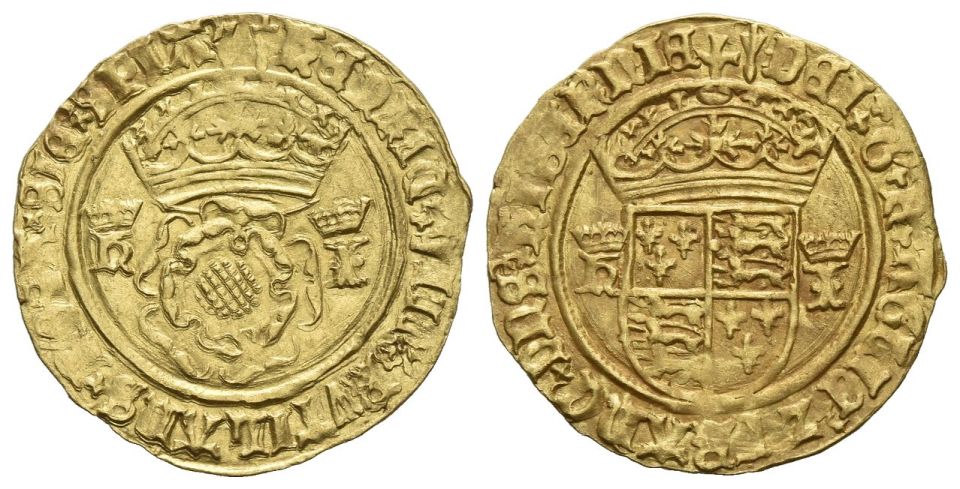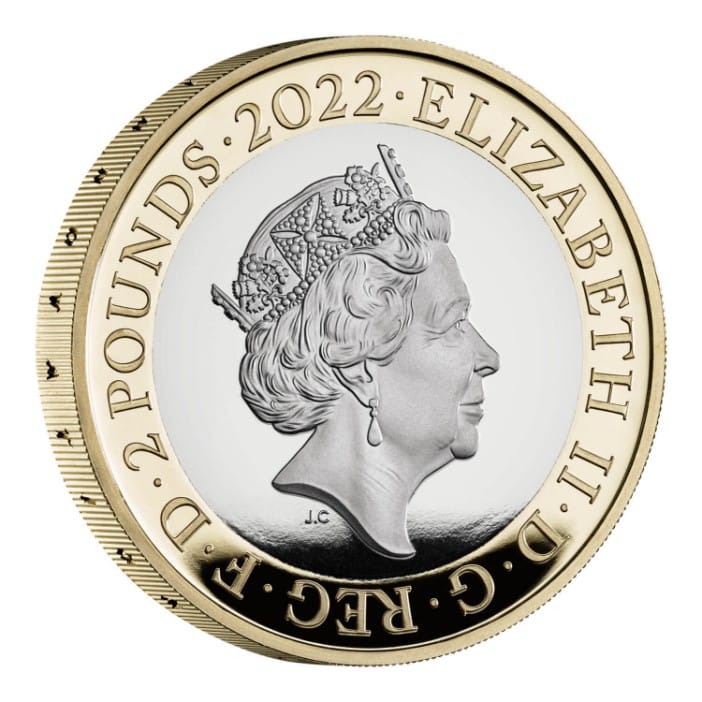Couple find £230k of English treasure while weeding their garden
A COUPLE have made a stunning discovery of English treasure while weeding their back garden and are set to sell it for £230k.
The husband and wife found an extraordinary stash of 70 gold Tudor coins in clumps of clay soil at their suburban home in Hampshire.
After they wiped off the mud and laid out the coins on the decking, it dawned on them that they were remarkably preserved.
They’re now set to go to auction in Zurich, Switzerland in November where they’re expected to fetch an estimated £230,000.
The earliest coin dates back to the reign of King Henry VI in the 1420s but a large number are from the 1530s and the reign of Henry VIII.
Some contain the initials of two of Henry’s wives, Catherine of Aragon and James Seymour.
They were found in Milford-on-Sea which is near the historic Christchurch Priory.
The hoard may have been buried for safekeeping by an exceptionally wealthy church cleric during the time of Henry VIII’s Dissolution of the Monasteries and Catholic priories.
The couple, who have asked not to be named for fear treasure hunters may descend on their quiet street, notified the authorities of their find in 2020.
Although the hoard was initially declared as treasure, it was later disclaimed and returned to the couple as no museums or institutions were in a position to buy it during the pandemic.
The coins are now set to go under the hammer at David Guest Numismatics’ auction in Switzerland where they will be sold individually.
It’s usually the case with coin hoards that a portion of the proceeds must go to the landowner, but in this case the finders are the landowners.
The couple are said to be “excited” about the sales which will be like a lottery win for them.
Auctioneer David Guest said: “It is a fantastic hoard found by a couple while they were gardening at the end of the garden of their home in Milford-on-Sea.
“They were digging in a flower border and found these circular discs in a clump of clay soil.
“They put them on the decking and washed them off and realised they were gold coins so they carried on digging and found a total of 64 of them in the same spot.
“After they notified the Portable Antiquities Scheme the coins were examined by the British Museum.
“They organised a further archaeological dig of the site and found six more coins.
“The earliest coins are from the reign of Henry VI in the 1420s and they go right up to 1537 and the reign of Henry VIII.
“They are in a remarkable state of preservation.”
Guest added that it was clearly a hoard assembled over a long period of time and that the coins amounted to £26 which was the equivalent price of a house back then.
“It was a lot of money. I doubt most people in England at the time ever saw a gold coin,” he said.
“The gold coins could have belonged to a merchant of considerable wealth or a church cleric who was very rich.
“Milford-on-Sea would have been part of the estate of Christchurch Priory at the time.
“The dissolution of the monasteries was a very tumultuous time and we know that other hoards were buried at this time to keep money away from the King’s commissioners that sought to take control of lands.”
He said the couple who made the find were in their 50s with two children and added “they were sitting on a gold mine”.
“I don’t think anyone digging in their back garden can imagine what it would be like to find one gold coin from Tudor times let alone a hoard of 70.
“The combined pre-sale estimate is a considerable amount of money and a life changing amount for the vendors.
“I have invited them out for the sale but I don’t know if they are coming yet but they are very excited. We have considerable interest in the sale.
“Hoards always attract interest as people love stories about the thrill of finding buried treasure.
“Combined with the quality of many of the coins and the state of preservation adds to the appeal.”
